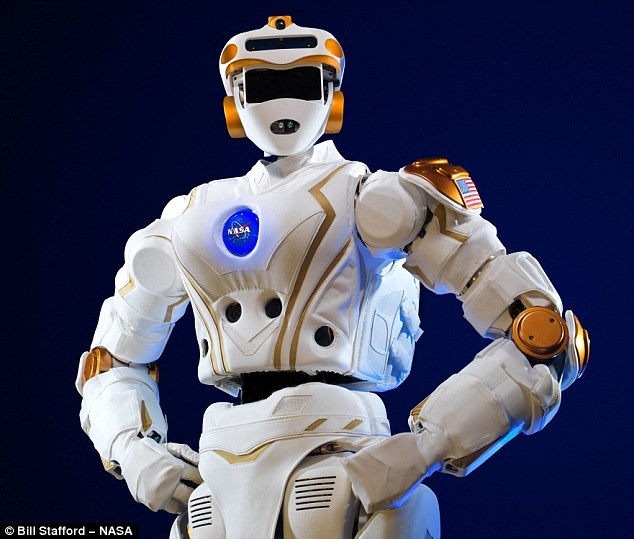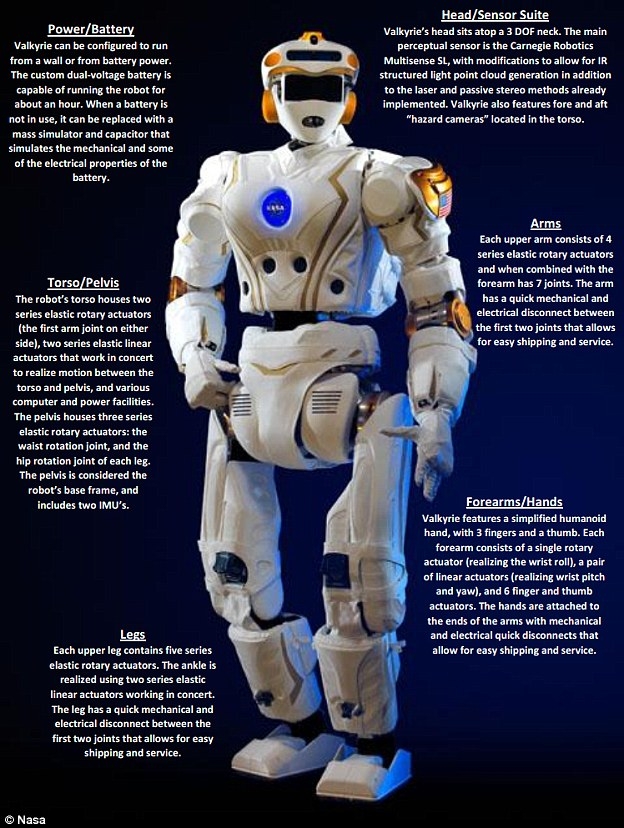Lei Feng network press: Author Stacy Liberatore, source Dailymail, by Lei Feng network (search "Lei Feng network" public concern) exclusive compilation, refused to reprint without permission!

A new astronaut will join the first human team to go to Mars. NASA is recruiting troops and wants to send a team with Robonaut5 (R5) robots capable of saving astronauts to perform a series of missions to Mars. The game called Space Robotics Challenge set a million dollars in prize money. Among the participating teams, an AI robot will be born and it will play the role of astronaut's assistant in space travel.
NASA plans to let people of insight create a new generation of R5 robots that can unite communication arrays, repair damaged solar arrays, identify and maintain habitats in virtual environments, and more. NASA has invented the most advanced earth-based robot system using hydraulics, but these technologies are not suitable for sub-zero temperature and the harsh environment of Mars. The new generation of R5 will use elastic technology instead of hydraulic principles, which is NASA's innovative approach to solve the problem of outer space operation.
As early as 1996, NASA launched the Robonaut project. At present, one of the project teams is working on the International Space Station. Experts believe that these robots, who have been branded in the space age, will someday be used in the extremely hot environment of the Earth. They can perform tasks that are impossible for humans and robots based on the global environment.
"Agile robots can work with communication arrays. They can be used for space missions to Mars and the execution of ground missions. They can also perform complex missions in dangerous situations, which is crucial for astronauts," NASA said. Monsi Roman, Centennial Challenges project manager. "NASA and our partners believe that there will be people brave enough to meet this challenge and the birth of innovative technology is just around the corner."
Dust storms have destroyed the habitat on Mars, and the R5 robots created by each participating team will be challenged by dust storms. Mars is where they perform three tasks.

August 16, 2016 is the first day of registration for the participating team. The first qualifying round will be held from mid-October to mid-November. The final list will be announced in December. The official practice will be in January 2017. In early June, the results will be announced at the Houston Space Center at the end of June.

The software systems developed in this event will be used in other robot systems – they can be used on robot models (such as Robonaut2) that are more distant and can be used on robots developed in the future. This technology allows robots to go to space bases to perform more pioneering tasks. They can also build astronauts, build habitats, life support systems, communications and solar instruments on other planets, and even conduct primary scientific research.
About Valkyrie - A humanoid robot that is eager for space travel
At present, Valkyrie walks on two legs and carries out some basic exercises, including lifting and controlling. This is a project that was jointly launched by NASA and the University of Edinburgh. NASA hopes that Valkyrie, named after a female pioneer in Norwegian mythology, will start a Mars trip earlier than an astronaut, do some preliminary placement, and maintain the equipment.
Scientists are doing everything possible to improve the robot's ability to control things and walk. They want to use Valkyrie's sophisticated sensors to sense changes in the external environment and improve their airworthiness. Their ultimate goal is to promote the progress of robotics and promote human-computer interaction.

The Valkyrie humanoid appearance was designed to allow him to work better with people in teamwork and replace astronauts to perform high-risk tasks. A cheek that glows like Iron Man reveals a linear engine that carries it to move the waist. Their energy comes from batteries that can last for about one hour on the back. Sensors include sonar devices and lidars. The operator can observe what Valkyrie is doing through Valkyrie's head, on the arm, on the abdomen and on the camera.
In short, it is an updated version of the existing Rovonaut, which is currently doing quasi-cleaning chores on the 260-mile-high international space station and will also pick up astronauts. Their legs are 4 inches with seven bite points on them. Each gripper on the leg has a light source, camera, and sensor placed for drawing a 3D map.
Via dailymail
